Explore the breathtaking landscapes of Patagonia through trekking, where glaciers and mountains await. Discover the natural wonders of this iconic destination as you embark on a journey of adventure and exploration.
From the towering peaks of the Andes to the awe-inspiring ice fields, Patagonia offers a paradise for outdoor enthusiasts and nature lovers alike. The region's diverse terrain and pristine beauty make it an ideal destination for those seeking an unforgettable trekking experience.
Immerse yourself in Patagonia's rugged wilderness and rich culture as you embark on an unforgettable trekking adventure. Whether you're a seasoned hiker or a novice explorer, Patagonia's trekking opportunities will leave a lasting impression.
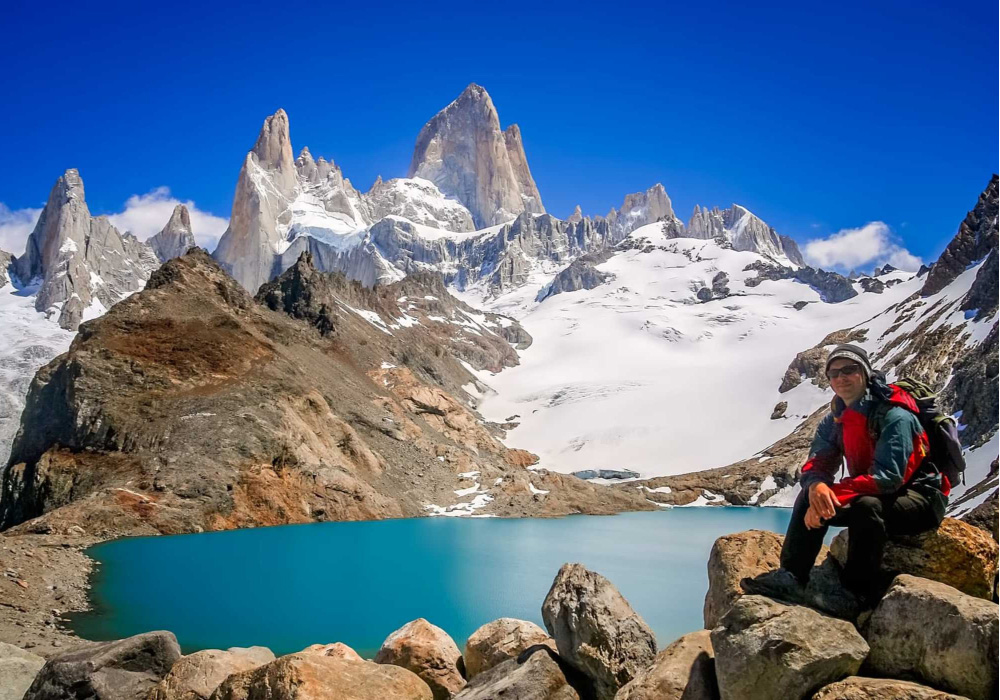
Discovering Patagonia
Patagonia, a land of stunning natural beauty, is a dream destination for adventure seekers and nature enthusiasts alike. Nestled at the southern tip of South America, this remote region is characterized by its rugged landscapes, towering mountains, and pristine glaciers. Discovering Patagonia is an experience like no other, offering a unique blend of awe-inspiring scenery and exhilarating outdoor activities. In this blog post, we will delve into the natural wonder of Patagonia and explore why it is a prime destination for trekking enthusiasts.
The natural wonder of Patagonia
From the jagged peaks of the Andes to the expansive ice fields of the Southern Patagonian Ice Field, this region showcases geological marvels. The iconic granite spires of Torres del Paine National Park and the breathtaking Perito Moreno Glacier are just a few examples of the extraordinary beauty that awaits visitors. With its abundance of national parks, reserves, and UNESCO World Heritage Sites, Patagonia offers an unparalleled opportunity to immerse oneself in the splendour of the natural world.
- Patagonia's diverse landscapes include mountains, glaciers, and fjords
- Torres del Paine National Park is renowned for its striking granite peaks and pristine lakes
- The Perito Moreno Glacier showcases the dynamic forces of glacial ice
- Numerous national parks and reserves protect the region's unique ecosystems
Why Patagonia is a great destination for trekking
Patagonia's allure as a trekking destination stems from its untamed wilderness and unparalleled opportunities for exploration. The region's extensive network of trails offers a gateway to some of the most breathtaking scenery on the planet, allowing hikers to traverse ancient forests and glacial valleys and witness the raw power of nature in action. Whether embarking on a multi-day trek through the rugged terrain of the W Circuit in Torres del Paine or navigating the otherworldly landscapes of Los Glaciares National Park, adventurers are rewarded with unparalleled vistas and a profound sense of connection to the natural world.
- The diverse terrain of Patagonia provides a range of trekking experiences for all skill levels.
- Trails such as the W Circuit and the O Circuit offer immersive journeys through iconic landscapes.
- Remote backcountry routes provide opportunities for intrepid explorers to discover hidden gems.
- The region's pristine wilderness fosters a sense of adventure and discovery.
Preparing for your trek
Choosing the right gear for your Patagonia trek
When preparing for a trek through the breathtaking landscapes of Patagonia, having the right gear is essential for a safe and enjoyable journey. The region's unpredictable weather and rugged terrain require careful consideration when selecting your equipment. Here are some key gear essentials to consider:
- Footwear: Sturdy, waterproof hiking boots with ankle support are crucial for navigating uneven terrain and protecting your feet from moisture.
- Layered clothing: Pack moisture-wicking base layers, insulating mid-layers, and a waterproof outer shell to adapt to the ever-changing weather conditions.
- Backpack: A comfortable and durable backpack with ample storage for essentials such as water, snacks, and extra layers is a must.
- Navigational tools: Bring a reliable map, compass, and GPS device to navigate the trails and avoid getting lost in the vast wilderness.
- Shelter and sleeping gear: Consider a lightweight tent, a sleeping bag rated for cold temperatures, and a sleeping pad for a comfortable rest during overnight treks.
Physical training for Patagonia's rugged terrain
To conquer the challenging terrain of Patagonia, physical preparation is key to ensuring your body can handle the demands of the trek. Incorporating specific training exercises can help build the necessary strength and endurance. Here are some essential physical training tips:
- Hiking and cardio workouts: Regular hikes, brisk walks, and cardiovascular exercises such as running or cycling can help condition your body for long-distance trekking.
- Strength training: Focus on strengthening your leg muscles, core, and upper body to handle steep inclines, uneven terrain, and carrying a backpack.
- Balancing exercises: Improve your stability and balance through activities like yoga, Pilates, or specific balance exercises to prevent injuries on unstable ground.
- Weighted backpack training: Gradually increase the weight of your backpack during training hikes to simulate the conditions of carrying gear during the actual trek.
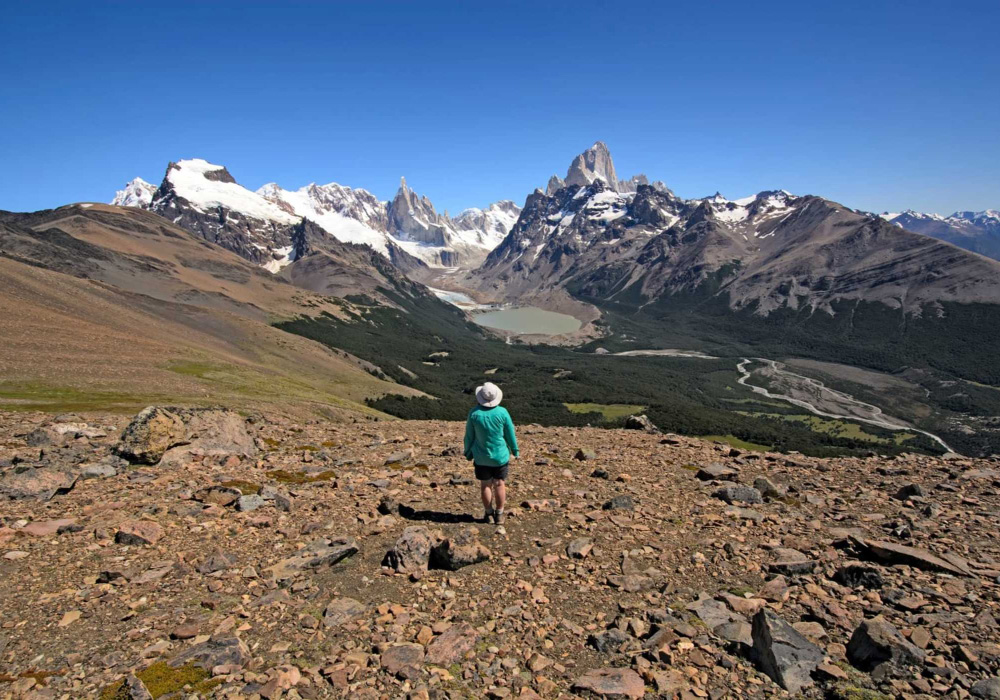
Mental preparation for a long-distance trek
Embarking on a long-distance trek through Patagonia requires mental resilience and preparedness to overcome the challenges that may arise. Here are some strategies to mentally prepare for the journey:
- Visualize the experience: Imagine yourself successfully navigating the trails and soaking in the stunning vistas to boost your confidence and motivation.
- Practice mindfulness: Develop mindfulness techniques to stay present and calm during challenging moments, fostering mental clarity and focus.
- Embrace flexibility: Maintain a positive and adaptable mindset and be prepared to adapt to changing weather conditions and unexpected obstacles.
- Set realistic expectations: Understand the physical and mental demands of the trek, set achievable goals, and acknowledge that it's okay to ask for support when needed.
Trekking routes in Patagonia
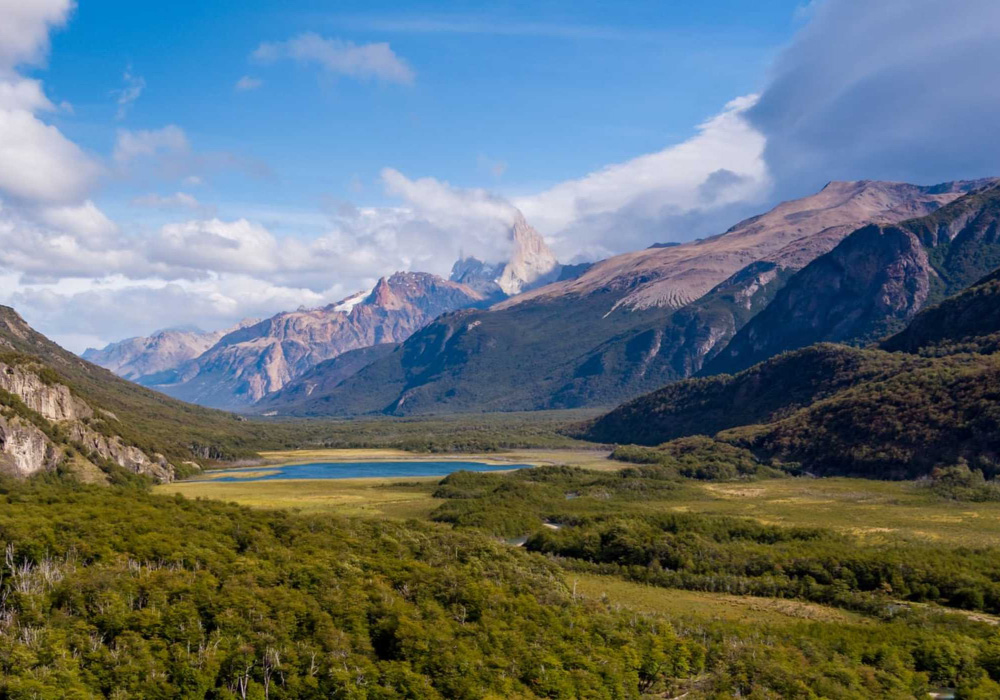
The Torres Del Paine circuit
When it comes to trekking in Patagonia, the Torres del Paine Circuit is a must-visit destination for adventure enthusiasts. This iconic trek takes you through the stunning landscapes of Torres del Paine National Park, offering breathtaking views of towering granite peaks, crystal-clear lakes, and majestic glaciers. The circuit is a 71-mile loop that can be completed in about 8 to 10 days, depending on your pace and fitness level. Here are some key highlights and tips for the Torres del Paine Circuit:
- You can start and end your trek at the park's main entrance, where you can find accommodation and gear rental facilities.
- Experience the awe-inspiring beauty of the park's most iconic feature: the three granite towers known as the Torres del Paine.
- Admire the electric-blue icebergs floating in the Grey Lake and witness the mighty Grey Glacier up close.
- Be prepared for unpredictable weather conditions and pack appropriate clothing and gear.
- You can stay at the park's campsites along the way, but make sure to book in advance during peak season.
The O circuit
If you're looking for a more challenging and remote trek, the O Circuit is the perfect choice. This 80-mile trek takes you around the entire Paine Massif, offering a complete immersion into the untamed wilderness of Torres del Paine National Park. Here are some highlights and tips for the O Circuit:
- Embark on a multi-day adventure through rugged terrain, dense forests, and pristine valleys.
- Witness the spectacular Grey Glacier and other stunning glaciers along the way.
- Experience the solitude and tranquillity of camping in the backcountry, away from the crowds.
- Be prepared for challenging weather conditions and steep ascents and descents.
- Ensure you have enough food and water supplies, as the route has limited facilities.
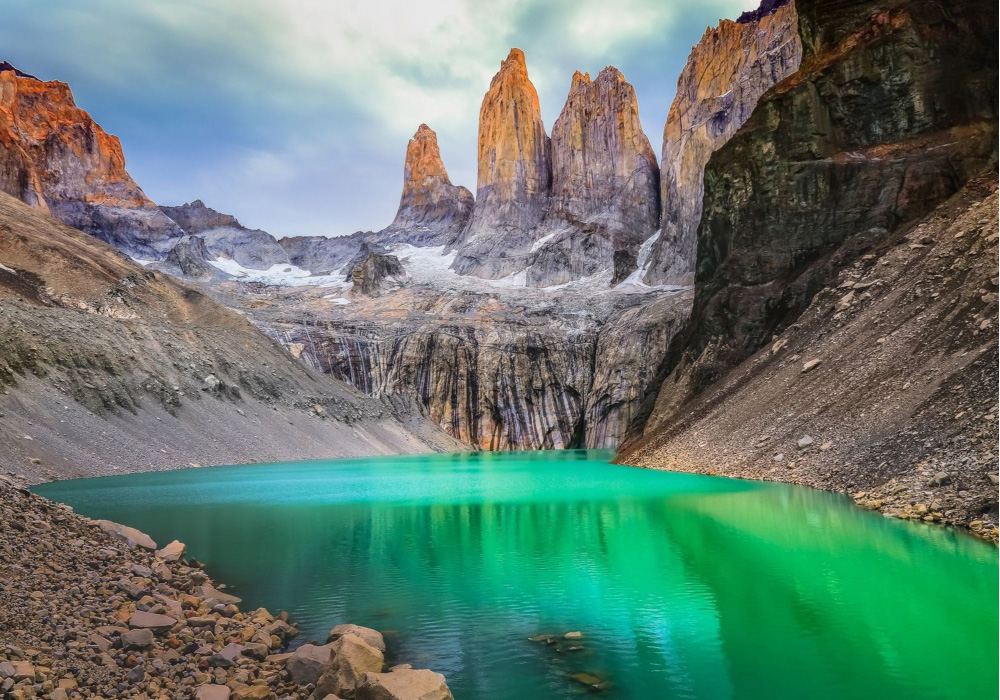
The Fitz Roy trek
The Fitz Roy Trek is a paradise for mountain lovers in Los Glaciares National Park. This 26-mile trek takes you through the awe-inspiring landscapes of Patagonia, offering panoramic views of the iconic Fitz Roy Mountain and its surrounding peaks. Here's what you need to know about the Fitz Roy Trek:
- Start your trek in El Chalten, known as the "Gateway to the Fitz Roy Range."
- Marvel at the striking beauty of Mount Fitz Roy, with its sharp granite spires and glaciers.
- Explore the picturesque Laguna de Los Tres, which offers stunning views of Mount Fitz Roy.
- Enjoy the tranquillity of camping in the wilderness, surrounded by pristine lakes and forests.
- Be prepared for strong winds and rapidly changing weather conditions.
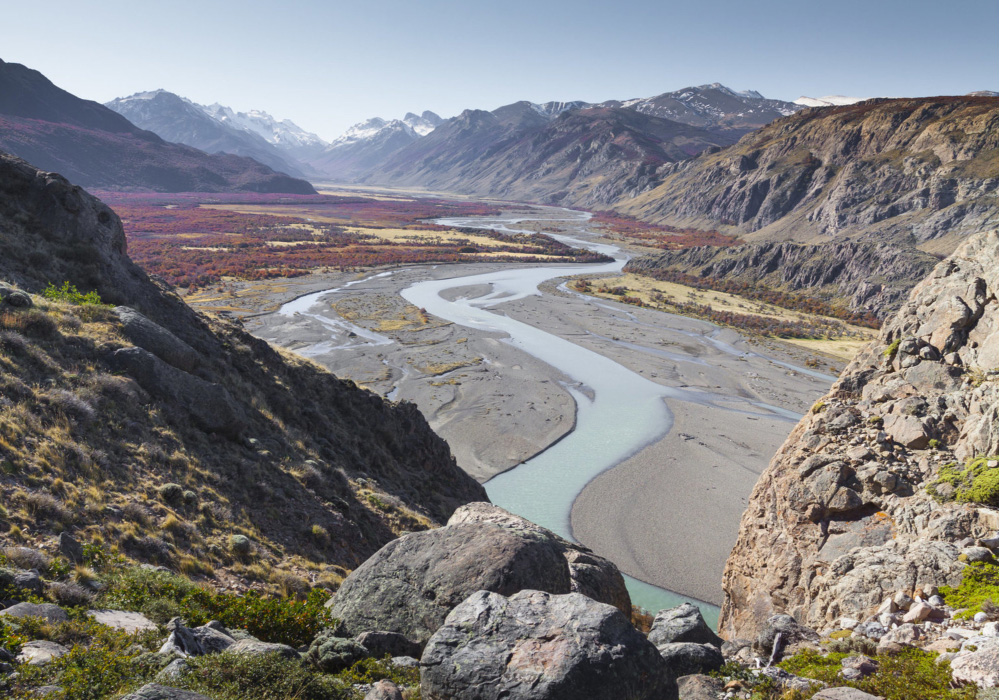
The Dientes De Navarino trek
For those seeking a unique and off-the-beaten-path adventure, the Dientes de Navarino Trek is a hidden gem in the southernmost region of Patagonia. This challenging 30-mile trek takes you through the remote and rugged landscapes of Navarino Island, offering breathtaking views of snow-capped peaks, fjords, and untouched wilderness. Here's what you need to know about the Dientes de Navarino Trek:
- Start your trek in Puerto Williams, the southernmost town in the world, accessible by a short flight or a ferry ride.
- Experience the raw beauty of the Dientes de Navarino mountain range, with its jagged peaks and pristine valleys.
- Enjoy the solitude of camping in the wilderness, surrounded by stunning vistas.
- Be prepared for challenging terrain, including steep ascents and descents and unpredictable weather conditions.
- Make sure to obtain the necessary permits and have a detailed map or GPS device for navigation.
Encountering Patagonia's wildlife
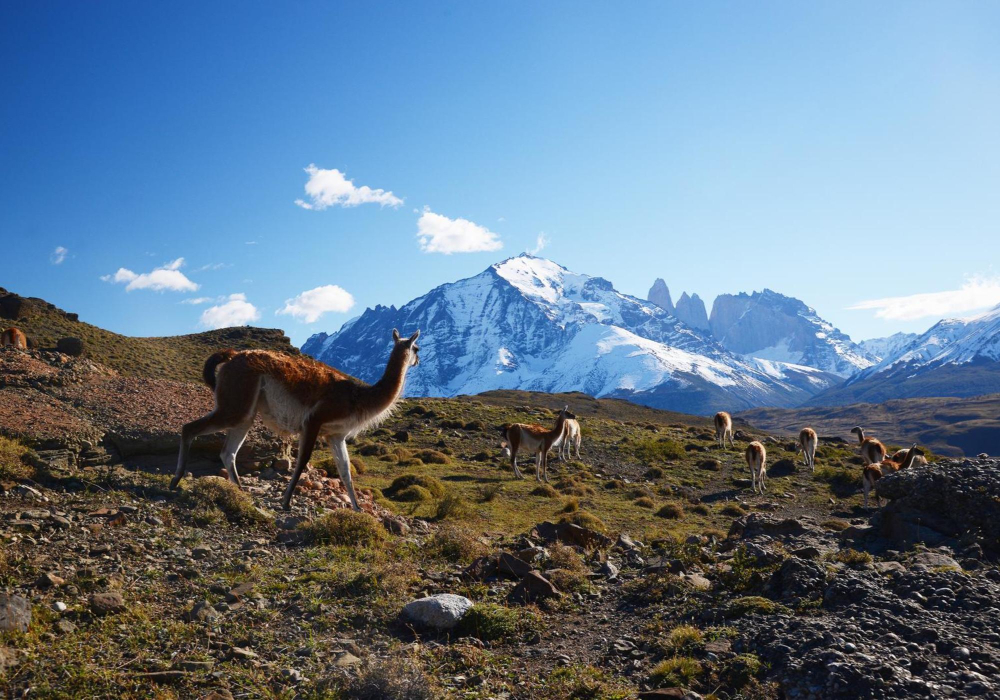 Patagonia's guanaco
Patagonia's guanaco
When it comes to exploring the captivating wilderness of Patagonia, encountering its diverse wildlife is an experience like no other. From magnificent birds soaring through the skies to elusive predators roaming the vast landscapes, Patagonia is a haven for nature enthusiasts. Among the fascinating creatures that call this region home, three stand out in particular: the guanaco, the Andean condor, and the puma. These remarkable animals add to Patagonia's allure and play crucial roles in maintaining the delicate balance of this unique ecosystem.
The Guanaco
The guanaco is a camelid native to South America, known for its elegance and resilience in the face of harsh environments. Here are some fascinating facts about these majestic creatures:
- Guanacos are herbivores, primarily feeding on grasses, shrubs, and lichens.
- They have adapted to survive in extreme weather conditions, and their thick coat of wool helps them withstand the biting cold of Patagonian winters.
- These social animals live in herds, which can range from a few individuals to over a hundred.
- While trekking through Patagonia, it is not uncommon to spot guanacos gracefully bounding across the vast plains or grazing peacefully in the distance.
The Andean condor
The Andean condor is a majestic bird of prey that symbolizes the untamed spirit of Patagonia. Here are some intriguing facts about these magnificent creatures:
- With a wingspan reaching up to 10 feet, the Andean condor is one of the largest flying birds in the world.
- These impressive birds primarily feed on carrion, using their keen eyesight to spot potential meals from great distances.
- Andean condors are known for their remarkable ability to glide effortlessly through mountainous landscapes, taking advantage of thermal updrafts to soar at incredible heights.
- Spotting an Andean condor in flight is a breathtaking experience as they gracefully navigate the Patagonian skies.
The Puma
The puma, also known as the mountain lion or cougar, is a magnificent predator roaming Patagonia's remote corners. Here are some intriguing facts about these elusive hunters:
- Pumas are solitary creatures, preferring to roam and hunt alone across vast territories.
- They are highly adaptable and can thrive in a variety of habitats, from dense forests to open grasslands.
- Pumas are skilled ambush predators. They use their agility and stealth to silently approach their prey before launching a swift attack.
- While encountering a puma in the wild is rare, its presence can be felt through its tracks and occasional sightings, leaving visitors in awe of its power and beauty.
Camping in Patagonia
Patagonia is a land of contrasts, where rugged mountains meet vast glaciers and crystal-clear lakes. It's a dream destination for trekkers and adventure seekers who want to explore the wilderness and enjoy the beauty of nature. One of the best ways to experience Patagonia is by camping. Camping in Patagonia is an unforgettable experience that allows you to immerse yourself in stunning landscapes and enjoy the peace and quiet of the great outdoors.
The basics of camping in Patagonia
Before you set off on your camping adventure in Patagonia, it's important to know the basics. Here are some things to keep in mind:
- Check the weather forecast before you leave.
- Bring warm and waterproof clothing.
- Carry a good quality tent and a sleeping bag suitable for the weather.
- Carry a portable stove and fuel for cooking.
- Carry plenty of food and water.
- Carry a first-aid kit and a map of the area.
These are just some of the essentials you'll need for camping in Patagonia. Pack wisely, and remember that the weather can change quickly, so it's best to be prepared for all conditions.
Choosing a campsite
Choosing the right campsite in Patagonia is crucial for a comfortable and safe camping experience. Here are some factors to consider when choosing a campsite:
- Look for a flat and dry area to pitch your tent.
- Choose a spot that is sheltered from the wind.
- Avoid setting up camp near water sources, as they can attract wildlife.
- Check for any potential hazards, such as loose rocks or overhanging branches.
- Respect the local environment and avoid damaging the vegetation.
In Patagonia, you'll find many designated campsites that offer basic facilities such as toilets and water sources. However, if you're feeling adventurous, you can also choose to camp in the backcountry, away from the crowds and closer to nature.
Cooking in the wilderness
Cooking in the wilderness can be a challenge, but it's also a fun and rewarding experience. Here are some tips for cooking in Patagonia:
- Carry a lightweight stove and fuel for cooking.
- Choose lightweight and non-perishable food items such as pasta, rice, and canned goods.
- Carry a reusable water bottle and a water filter or purification tablets.
- Dispose of your waste properly and avoid leaving any trash behind.
- Respect the local wildlife and avoid attracting them with food.
Cooking in Patagonia can be a great way to try out local cuisine and experiment with new recipes. Just remember to be mindful of the environment and leave no trace behind.
Best time to visit Patagonia
Patagonia is one of the most breathtaking destinations in the world. Its towering glaciers, rugged mountains, and pristine lakes make it a trekker's paradise. However, choosing the best time to visit Patagonia can be tricky. This post will help you decide when to plan your next adventure to this stunning region.
The seasons of Patagonia
Patagonia experiences four distinct seasons, each with its own unique charm. Here is a breakdown of what you can expect during each season:
- Summer (December to February): This is the peak season for trekking in Patagonia. The weather is mild, and the days are long, making it ideal for exploring the region. However, this is also the busiest time of the year, so expect crowds and higher prices.
- Fall (March to May): At this time of year, the crowds start to thin out, and the weather is still mild. The autumn foliage adds a splash of colour to the landscape, making it ideal for photography enthusiasts.
- Winter (June to August): The winter months in Patagonia are cold and harsh. However, this is the best time to visit if you are a fan of snow sports like skiing and snowboarding. The region transforms into a winter wonderland, and the crowds are non-existent.
- Spring (September to November): The snow melts, and the flora and fauna come back to life during spring. The weather is still cool, but the crowds are fewer, making it an ideal time for those who prefer a quieter holiday.
When to avoid visiting Patagonia
While Patagonia is a beautiful destination all year round, there are certain times of the year that you should avoid:
- Christmas and New Year: The peak season coincides with the holiday season, and prices skyrocket during this time of year. It is also the busiest time of the year, so expect crowds everywhere.
- July and August: While this is the best time to visit if you are a snow sports enthusiast, it is also the busiest time of the year. The prices are high, and the crowds can be overwhelming.
- September and October: The spring months are beautiful in Patagonia but also the windiest. If you are planning to trek, avoid these months as the strong winds can make it challenging.
Now that you know the best time to visit Patagonia, start planning your next adventure to this stunning region. Whether you prefer trekking, skiing, or just soaking in the natural beauty, Patagonia has something for everyone.
Experiencing Patagonia's culture
The Indigenous people of Patagonia
When it comes to experiencing Patagonia's culture, one cannot overlook the rich history and traditions of the indigenous people who have inhabited this vast region for thousands of years. The indigenous communities in Patagonia are diverse, each with their own unique customs and way of life. Here are some fascinating insights into the Indigenous people of Patagonia:
- Patagonia is home to several indigenous groups, including the Mapuche, Tehuelche, and Selk'nam tribes.
- The Mapuche people, known for their strong warrior tradition, have a deep connection to the land and nature. They believe in the importance of living in harmony with the environment.
- The Tehuelche people, skilled hunters and gatherers, have a rich oral tradition that has been passed down through generations.
- The Selk'nam people, also known as the Ona, have a unique language and are known for their elaborate ceremonies and art.
These indigenous communities have faced significant challenges over the years, including the loss of their lands and cultural practices. However, efforts are being made to preserve their traditions and promote cultural exchange with visitors to the region.
The Gaucho culture
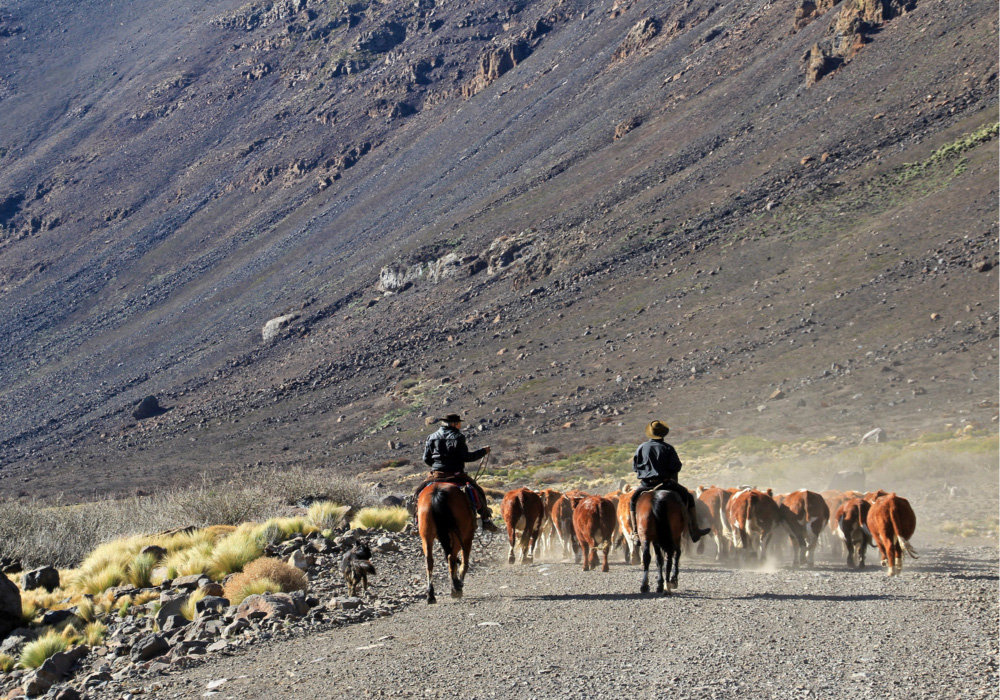
Another integral part of Patagonia's culture is the gaucho tradition. Gauchos are skilled horsemen who have played a vital role in shaping the history and identity of the region. Here are some key aspects of the gaucho culture:
- Gauchos are known for their exceptional horse riding skills and their ability to herd cattle across the vast Patagonian landscapes.
- They have a distinct style of dress, often wearing wide-brimmed hats, ponchos, and traditional leather boots called botas de potro.
- Gaucho music, known as música folklórica, is essential to their culture. It features traditional instruments like the guitar and accordion, and the songs often depict the gaucho way of life.
- Traditional gaucho festivals, called jineteadas, showcase their equestrian skills and include activities such as horse racing and lassoing.
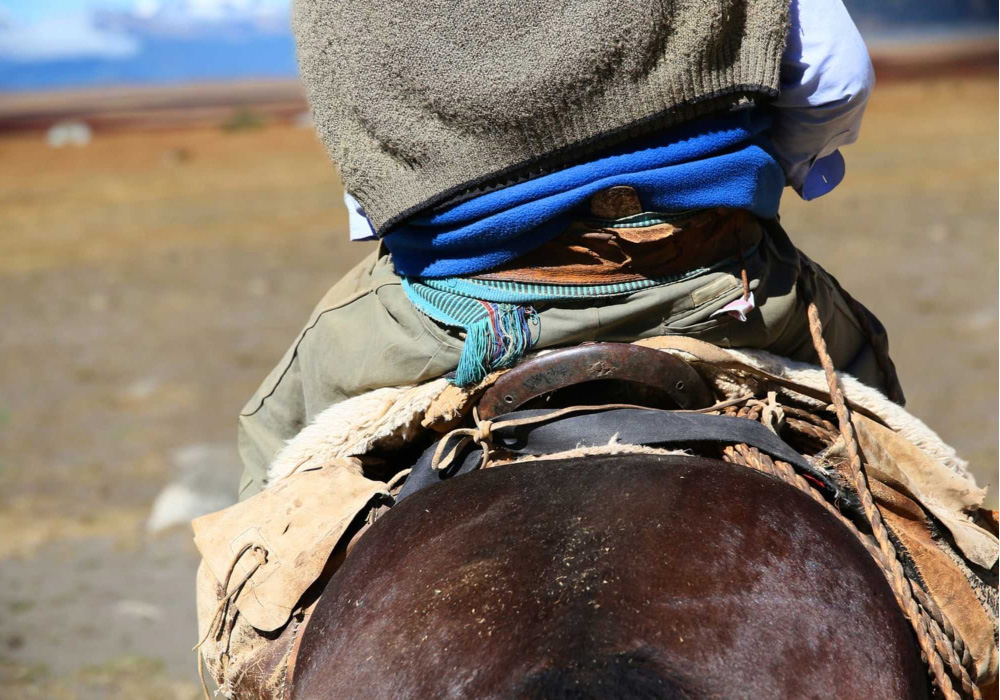
Gaucho culture is deeply rooted in the rural traditions of Patagonia and reminds us of the region's agricultural heritage.
The food and drink of Patagonia
No cultural exploration is complete without indulging in the local cuisine, and Patagonia offers a delightful array of flavours and dishes. Here are some must-try food and drinks in Patagonia:
- Asado: A traditional Argentine barbecue where succulent cuts of meat, such as beef and lamb, are grilled to perfection over an open fire.
- Empanadas: These savoury pastries are filled with meat, cheese, and vegetables.
- Maté: Argentina's national drink, maté is a caffeine-rich herbal tea made from the leaves of the yerba maté plant. It is often shared among friends and enjoyed from a gourd with a metal straw called a bombilla.
- Centolla: Patagonia is known for its delicious seafood, and centolla, or king crab, is a local delicacy. It is typically served with a garlic butter sauce.

Exploring Patagonia's culinary delights allows visitors to truly immerse themselves in the local culture and savour the region's unique flavours.
Preserving Patagonia's wilderness
Patagonia, the vast and awe-inspiring region shared by Argentina and Chile, is renowned for its stunning landscapes, rugged mountains, and pristine glaciers. This untouched wilderness attracts adventure seekers from all over the world who are drawn to its unique beauty and the opportunity to explore its natural wonders. However, as the popularity of Patagonia as a tourist destination grows, it becomes crucial to prioritize the preservation of its delicate ecosystem and ensure the long-term sustainability of tourism in the region. This blog post will delve into the importance of sustainable tourism in Patagonia and shed light on the organizations working tirelessly to protect its natural resources.
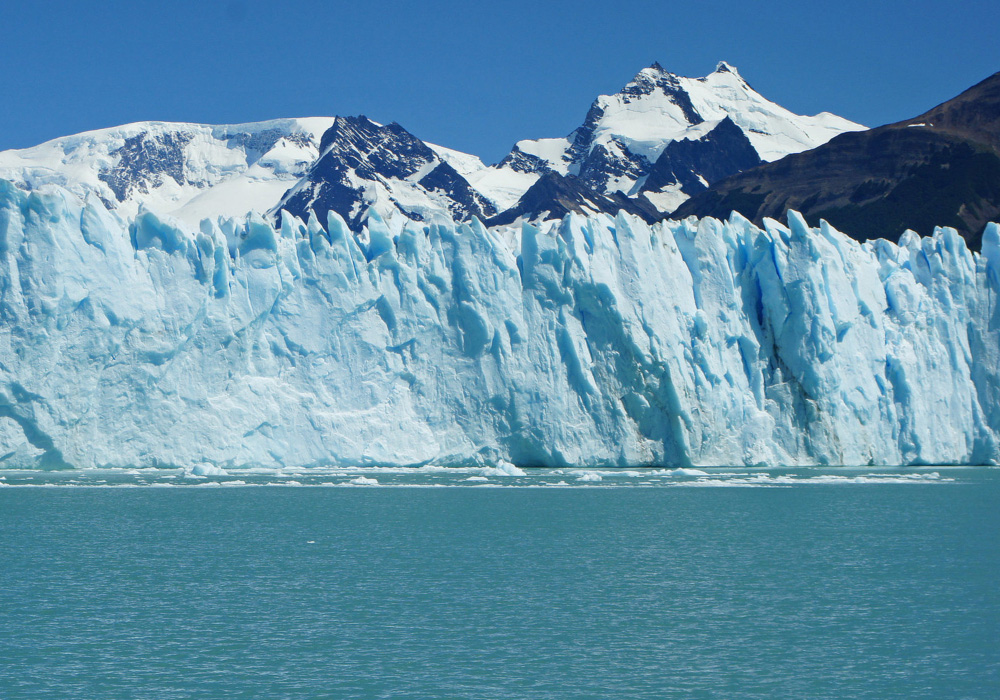
The importance of sustainable tourism in Patagonia
Preserving Patagonia's wilderness is not just about protecting its extraordinary landscapes for future generations; it is also vital for the region's economy and the well-being of local communities. Sustainable tourism practices in Patagonia are essential to maintain the delicate balance between human activities and the environment. Here are some key reasons why sustainable tourism is crucial in Patagonia:
- Promotes conservation: By adopting sustainable practices, tourists and businesses alike can minimize their negative impact on the environment and contribute to the preservation of Patagonia's unique flora and fauna.
- Preserves cultural heritage: Sustainable tourism encourages visitors to engage with local communities, promoting cultural exchange and preserving Patagonia's rich cultural heritage.
- Supports local economy: Sustainable tourism initiatives help generate income for local communities, enabling them to invest in conservation efforts and create a sustainable future.
- Reduces carbon footprint: Sustainable tourism focuses on minimizing carbon emissions and promoting eco-friendly transportation options, such as hiking, biking, and using public transport, reducing the overall environmental impact.
To ensure the long-term sustainability of tourism in Patagonia, visitors, tour operators, and local authorities must embrace sustainable practices, such as responsible waste management, minimizing energy consumption, and respecting wildlife and natural habitats. Doing so can preserve Patagonia's wilderness and allow future generations to experience its breathtaking beauty.
So pack your bags, lace up your boots, and embark on a remarkable journey through Patagonia's wilderness.

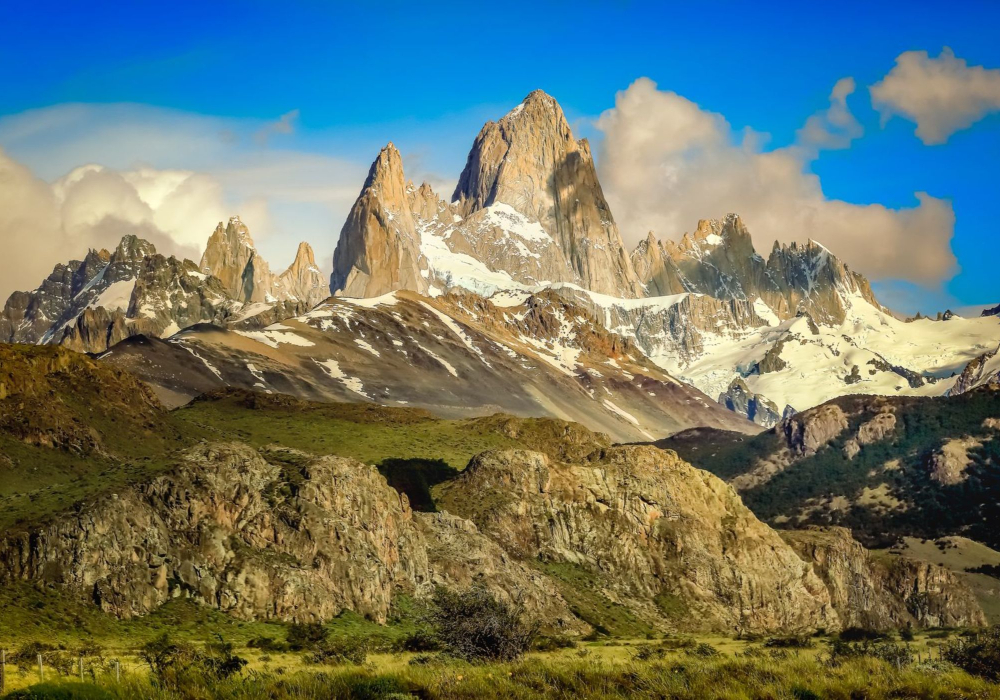

Comments powered by CComment